Sample information |
|
| Picture |
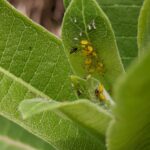
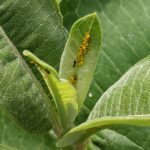
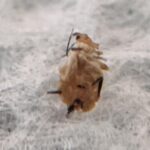
|
|---|---|
| Location | |
| Collection date | 08/30/2020 |
| Captive / Cultivated? | Wild-caught |
| Group | Bordenstein Lab |
| Observations | These aphids were collected directly from a milkweed plant by scraping into a tube filled with 70% ethanol. It was a bright and sunny day, 80F. There were small ants and a milkweed bug on the same plant. |
| Putative identification | Arthropoda Insecta Hemiptera Aphididae Aphis Aphis nerii |
Methods |
|
| Extraction kit | DNeasy (Qiagen) |
| DNA extraction location | Whole arthropod |
| Single or Duplex PCR | |
| Gel electrophoresis system | MiniOne |
| Buffer | TBE |
| DNA stain | GelGreen |
| Gel images |
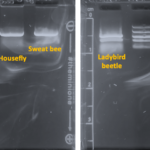
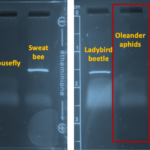
|
| Protocol notes | The aphids were stored in 70% ethanol for about 3 weeks prior to DNA extraction. They were highly desiccated. DNA Extraction: DNA was extracted from four adults. They were incubated in lysis buffer at 56C for 2 hours. Following incubation, I did a 30 sec spin and transferred the supernatant to a fresh tube of 200ul ethanol. This was placed in the freezer overnight and purified the following day. Eluted DNA was immediately incubated at 65C for one hour prior to PCR. PCR: MiniOne Taq polymerase was used. Gel electrophoresis: The arthropod gel looks whispy; however, that went away as the gel ran longer. This could have been caused by not adding loading dye to samples. The results were very clear, though. I re-colored the gel images in PowerPoint. The MiniOne ladder contains 5 bands: 100, 300, 500, 1000, and 2000 bp. |
Results |
|
| Wolbachia presence | No |
| Confidence level | Medium |
| Explanation of confidence level | I obtained a solid band for the arthropod DNA, no Wolbachia band, and both controls worked. I believe it is likely uninfected; however, my confidence level is medium because the aphids were highly desiccated prior to DNA extraction. I would like to re-analyze from fresh samples to confirm the absence of Wolbachia. Could the toxicity of the milkweed plant impact symbionts? Sanger sequencing was a success and confirmed, with 100% identity, that the aphids were properly classified as Aphis nerii. |
| Wolbachia 16S sequence | |
| Arthropod COI sequence | Download FASTA
Download AB1
GGTATAATCGGATCTTCTCTTAGAATTTTAATTCGACTAGAATTAAGTCAAATTAATTCAATTATTAATAATAATCAATTATATAATGTAATTGTTACAATTCATGCTTTCATTATAATTTTTTTTATAACAATACCAATTGTAATTGGAGGATTTGGAAACTGGTTAATTCCTATAATAATAGGATGTCCAGATATATCTTTTCCACGATTAAATAATATTAGATTTTGATTATTACCTCCATCTTTAATAATAATAATTTGTAGTTTTATAATTAATAATGGAACAGGAACAGGATGAACAATTTATCCACCTTTATCAAATAACATTGCTCATAATAATATCTCAGTTGATTTAACTATTTTTTCTCTTCACTTAGCAGGAATTTCTTCTATTTTAGGAGCAATTAATTTTATTTGTACAATCCTAAACATAATACCTAATAATATAAAATTAAATCAAATTCCTCTATTTCCATGATCAATTTTAATTACAGCTATACTATTAATTTTATCTTTACCAGTATTAGCTGGTGCAATTACTATACTATTAACTGATCGAAATCTAAATACATCATTTTTTGACCCAGCAGGAGGGGGTGATCCTATCCTTTATCAACATTTATTTTGA
BLAST at The Wolbachia Project BLAST at NCBI
|
| Summary | The Aphis nerii was found to be negative for Wolbachia. |
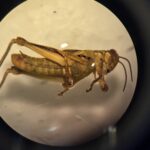 Differential Grasshopper – Melanoplus differentialis
Differential Grasshopper – Melanoplus differentialis Pill Bug (Armadillidium vulgare) – Draft
Pill Bug (Armadillidium vulgare) – Draft Melanoplus Femurrubrum
Melanoplus Femurrubrum Grasshopper – Orthoptera
Grasshopper – Orthoptera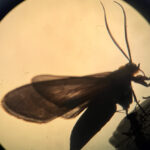 Cisseps Fulvicollis
Cisseps Fulvicollis